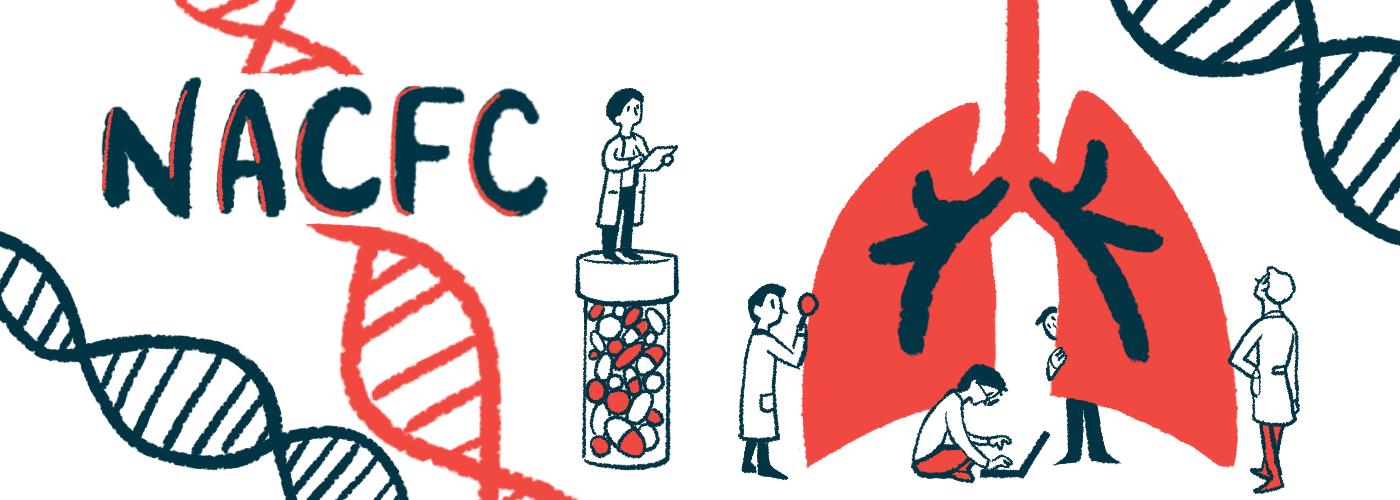#NACFC2021 – Trikafta Lowers Need for Antibiotics, Mucus Clearance in Children
Written by |

Treatment with Trikafta lowered the need for antibiotics and mucus-clearing therapies among children and adolescents with cystic fibrosis being followed at a pediatric CF center in Utah.
Jeffery T. Zobell, a clinical pharmacist at Primary Children’s CF Center in Salt Lake City, shared the findings in the presentation “Beyond PFTs: Elexacaftor/tezacaftor/ivacaftor outcomes in a pediatric CF center,” at this year’s North American Cystic Fibrosis Conference (NACFC).
Trikafta is an oral combination of three CFTR modulators (elexacaftor, tezacaftor, and ivacaftor) that work to improve the functionality of the CFTR protein in people with specific CF-causing mutations.
The therapy, marketed by Vertex Pharmaceuticals, was first approved in the U.S. for patients 12 and older in 2019; that approval has since been expanded to include children as young as 6 and a greater number of relevant mutations. Clinical trials have demonstrated that the treatment can substantially improve lung function in eligible patients.
Here, researchers reviewed data for 70 children with CF, ages 12 to 18, who started on Trikafta while being cared for at Primary Children’s. Just over half were female, and all carried at least one copy of the F508del mutation, the most common CF-causing mutation. About half had previously been on other CFTR modulators, and around three-quarters had commercial insurance.
The team specifically looked for differences in clinical factors and the use of other CF treatments over the year before and after their patients had started taking Trikafta. A limitation of this design, Zobell noted, is that Trikafta first became available toward the start of the COVID-19 pandemic, which may have influenced results. However, the fact each patient served as their own control helps limit such effects, he added.
These children had been treated with antibiotics, without needing hospitalization, a total of 189 times in the year prior to starting Trikafta, data showed. In the year after starting on the therapy, there were a total of 28 such antibiotic treatments, a statistically significant decrease.
The number of antibiotic treatments requiring hospitalization similarly dropped, from 65 to three. A significant decrease in the use of mucus-clearing agents, namely hypertonic saline and Pulmozyme (dornase alfa), was also seen.
Broadly, these decreases were seen regardless of patients’ history of prior CFTR modulator use, suggesting that Trikafta “significantly benefits pediatric CF patients, both who were on prior modulator therapies and those who were not,” according to Zobell.
These results imply that, with highly effective Trikafta therapy, patients may have less need of mucolytics (mucus-clearing treatments), Zobell said.
Children and adolescents also experienced a significant increase in average body mass index (BMI, a measure of weight adjusted for height) after starting on Trikafta, which has been reported in other studies at NACFC. Of note, people with CF have historically tended to have abnormally low BMIs because the disease can make it harder to get enough nutrients from food.
Editor’s note: The Cystic Fibrosis News Today team is providing coverage of the virtual 2021 North American Cystic Fibrosis Conference (NACFC) Nov. 2–5. Go here to see the latest stories from the conference.







